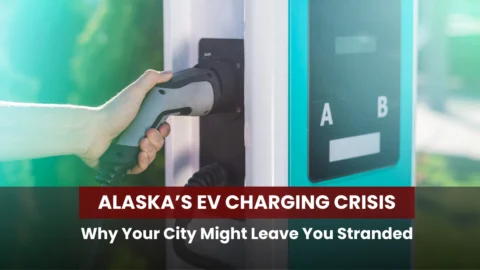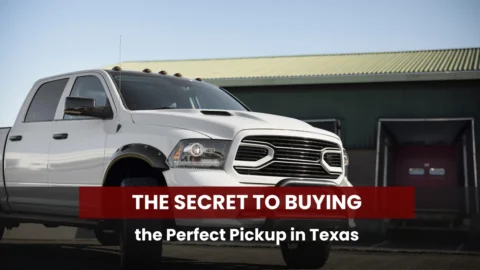Texas is not just big; it’s booming. The state’s unprecedented population and economic growth continue to put immense pressure on its aging infrastructure expansion Texas. In a massive, proactive move to keep pace with this surging demand, the Texas Department of Transportation (TxDOT) and state officials have announced a monumental new funding and construction plan. This multi-billion-dollar initiative outlines aggressive Texas highway expansion and major roadworks Texas is slated for the 2025–2026 fiscal years and beyond.
This isn’t just about pouring more concrete; it’s a strategic, long-term commitment designed to reshape the driving experience, enhance safety, and secure Texas’s position as an economic powerhouse. For residents, commuters, and businesses, understanding the details of these Texas DOT projects is essential.
The Unified Transportation Program: A Blueprint for Growth
The core of this ambitious undertaking is the updated statewide transportation plan Texas, known as the Unified Transportation Program (UTP). For the third consecutive year, the 10-year UTP has surpassed $100 billion, with the latest iteration announcing an investment of over $146 billion over the next decade.
The 2025–2026 period serves as a critical launchpad for many of these key initiatives, ensuring a swift transition from planning to construction. This funding is sourced from a mix of state revenue, federal allocations, and dedicated constitutional financing, a testament to the state’s prioritization of its transportation network.
Three Pillars of the Plan
TxDOT’s strategic focus for these highway upgrades Texas rests on three non-negotiable goals:
- Enhancing Safety: Implementing data-driven engineering solutions to reduce fatalities and serious injuries across the state’s roadways. This includes adding shoulders, installing new lighting, and improving railway crossings.
- Addressing Congestion & Connectivity: Focusing major expansion efforts on the most congested urban and regional corridors to ease Texas traffic updates and connect rural areas more effectively to economic hubs.
- Preserving Roadways: Allocating significant funds for routine maintenance and development to ensure the longevity of the existing network, helping to minimize the future need for costly, full-scale reconstruction.
Major Texas Road Construction 2025–2026 Projects
The 2025–2026 schedule is packed with high-impact projects, many of which fall under the “Texas Clear Lanes” initiative, which is specifically aimed at tackling the state’s most notorious bottlenecks without relying on tolls. These major roadworks Texas will affect millions of commuters in and around the state’s fastest-growing metropolitan areas.
The I-35 Capital Express Project (Austin)
One of the most complex and critical undertakings is the I-35 Capital Express Project, particularly the central segment that runs through downtown Austin.
- Project Goal: To overhaul I-35 in Austin, one of the most chronically congested interstate stretches in the nation.
- 2025–2026 Focus: Initial funding of nearly $800 million is directed towards reconstructing frontage roads, retrofitting and removing portions of the aging upper deck, and improving cross streets to enhance local mobility. This is a multi-phase, multi-year project, but the early stages will be heavily visible in 2025 and 2026.
The Loop 1604 and I-10 Corridors (San Antonio)
San Antonio continues to experience massive suburban growth, making projects along its main loops and corridors essential. Several key 2026 highway improvements are scheduled to either start or make significant progress.
- Loop 1604: Continual expansion and widening projects are slated to add mainlanes and direct connectors. For example, the segment from US 90 to I-10 is a massive, multi-year project that will see significant work in this period.
- I-10 Widening: Projects on I-10, particularly in the expanding corridors of Bexar and Guadalupe counties, are scheduled to begin or continue, expanding the freeway to six or more lanes to handle increased freight and commuter traffic.
North Texas Expansion (Dallas-Fort Worth Metroplex)
The DFW area, known for its sprawling network, will see multiple key Texas road construction 2025 and 2026, including:
- I-30 Widening (Arlington): A significant project is scheduled to widen I-30 from Cooper Street to the Dallas County line, addressing a major pinch point for commuters traveling between Dallas and Fort Worth.
- Regional Freeway Upgrades: Various other high-priority sections of major highways, including I-20 and Loop 820, are planned for auxiliary lanes, interchange reconfigurations, and additional mainlanes to alleviate severe congestion hot spots.
Gulf Coast Region and Rural Connectivity
The expansion isn’t limited to the urban centers. The statewide transportation plan in Texas allocates substantial resources to regional corridors supporting trade, energy, and rural economies.
- US 77 Corridor (South Texas): A massive $1.3 billion investment in projects along U.S. 77 is planned, focusing on the Rio Grande Valley, one of Texas’s fastest-growing regions. This is vital for international trade and local economic connectivity.
- SH 71 (Austin to Bastrop): Funding is set aside for significant highway upgrades in Texas, including the construction of overpasses to improve safety and flow along this rapidly developing commuter and freight route.
Beyond Asphalt: The Technological Edge
While Texas highway expansion often conjures images of heavy machinery, the UTP also includes a substantial investment in the future of transportation: Intelligent Transportation Systems
TxDOT has earmarked funds for technology projects to optimize the existing network and provide real-time Texas traffic updates. This investment includes:
- Smart Traffic Signals: Deploying adaptive signal systems that can respond in real-time to traffic volume, reducing wait times and improving flow.
- Digital Signage and Sensors: Expanding the network of digital message boards and roadway sensors to provide drivers with immediate, accurate information on congestion, accidents, and alternative routes.
- System Resiliency: Investing in technology to ensure the transportation network can withstand and recover quickly from severe weather events, a critical consideration for infrastructure expansion Texas.
These technological upgrades are a crucial part of the 2025–2026 roadmap, aiming to deliver immediate congestion relief even before the physical construction of major roadworks Texas is complete.
Navigating the Immediate Future: What to Expect
The scale of these Texas DOT projects means that disruptions are inevitable, particularly in major metro areas. TxDOT is committed to communication and minimizing impact, but drivers should prepare for an era of heavy Texas road construction in 2025 and 2026.
Tips for Commuters
- Use Project Trackers: TxDOT maintains an excellent online Project Tracker and the DriveTexas resource for real-time Texas traffic updates. Habitual use of these tools can save significant time.
- Flexibility is Key: If your work allows, consider flexible hours or remote work to avoid peak construction periods.
- Explore Alternatives: For the first time, the statewide transportation plan in Texas is placing a strong emphasis on multimodal transit, including rail and increased public transit options in urban centers. Explore these alternatives as part of your commuting strategy, as they may bypass major construction zones.
- Prioritize Safety in Work Zones: Always adhere to reduced speed limits in major roadworks Texas areas. The new plan places significant emphasis on safety for both drivers and construction crews.
Economic and Quality of Life Impact
While the short-term inconvenience of Texas road construction 2025 is real, the long-term benefits of the Texas highway expansion are transformative. Reduced congestion translates to:
- Economic Efficiency: Lower costs for shipping goods and faster market access for businesses.
- Cleaner Air: Less time idling in traffic means reduced fuel consumption and lower emissions.
- Improved Quality of Life: More time at home and less time behind the wheel for millions of Texans.
These 2026 highway improvements are an investment in the future economic prosperity and livability.
Most Common Inquiries
1. What is the Unified Transportation Program?
The UTP is a 10-year statewide transportation plan developed by TxDOT that allocates state and federal funding for all transportation projects, including Texas highway expansion, public transit, aviation, and rail. The latest version allocates over $146 billion.
The plan focuses heavily on congestion relief through the “Texas Clear Lanes” initiative, which specifically targets the state’s 100 most congested roadways. Projects include adding mainlanes, reconfiguring major interchanges, and implementing advanced traffic technology to provide real-time Texas traffic updates.
Many of the major congestion relief projects, particularly those under the “Texas Clear Lanes” program, are non-tolled. However, the overall infrastructure expansion plan is diverse, and some specific projects may include toll components, so drivers should check the details of individual Texas DOT projects.
Many projects are already in the planning or early construction phases, while others are scheduled to break ground throughout 2025 and 2026. Specific start dates can vary based on project development, utility relocation, and contract awards. You can track progress via the official TxDOT Project Tracker.
The 2026 highway improvements include a dedicated $669 million investment for rural corridors and key roadways in economic hubs. This funding is aimed at improving safety, widening rural highways, and better connecting communities outside the major metropolitan areas.
While the largest portion of the budget is dedicated to Texas highway expansion, the UTP is a multimodal plan. It includes funding for public transportation, aviation, ports, and rail, providing a holistic approach to Texas’s overall statewide transportation plan.
Have a quick car tip or hack to improve your commute or vehicle maintenance? Join the conversation at Ask about cars.







